Urbact Interactive Cities Transnational Meeting Murcia – Part One
Edited on
02 October 2018The Murcia Team had the immense pleasure of hosting the previous to last partner meeting of the Urbact Interactive Cities Network in our city from the 24th until the 26th of January 2018, a vibrant mixture of working sessions, expert interventions, site-visits and workshops throughout the three-day-programme.
Murcia with ≈450K inhabitants is the 7th largest city of Spain, capital of the Murcia Region and located in the southeast of the Iberia peninsula. The City has all modern facilities one can expect from a regional capital, and the economy is primarily based on services, (residential) tourism being important, and agriculture (exporting all over Europe, examples include fruit, vegetables and wine).
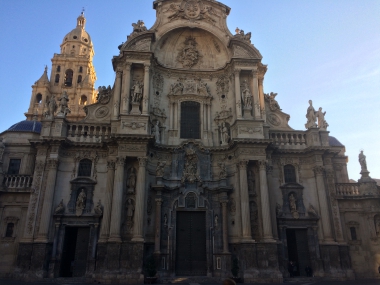
Culturally speaking, in the little free time our guests had, the main sights are located in the centre of the city, the Cathedral of Murcia (built 1394 and 1754), the Bishop's Palace (18th Century), the Glorieta Square and City Hall (Ayuntamiento) which lie on the banks of the Segura River, with a modern extension the “Rafael Moneo” building (1999, protected), the Malecón boulevard (19th century) Romea theatre, many squares throughout the centre have churches and emblematic buildings as are the Iglesia de Santo Domingo, the Almudí Palace (17th century), the Royal (“Real”) Casino (1847), the Santa Clara monastery (formerly a 13th century Moorish palace), etc.
Day one - morning
We officially kicked-off the meeting on Wednesday at 09.30h. with a formal reception and welcome by our Mayor, José Ballesta Germán, who greeted the mixed delegation of representatives, including two vice-mayors, representing eleven cities of nine European countries, as well as our Urbact experts, and invited dignitaries.
This was followed by the keynote speck “The Role and Importance of Communication in Urban Revitalisation through Citizen Participation and Engagement” which focussed on the Murcia good practice “Urban DNA”, an approach that establishes the next phase of integrated and participative urban regeneration, and the intervention process for neighbourhoods, targeting not fully deteriorated neighbourhoods. As such they are neighbourhoods that are at risk of worsening and already showing signs of decline and degentrification but have not fully entered the cycle of deterioration yet. Through a intervention that takes place in three phases and is based on citizen participation and engagement from beginning till end. The “Urban DNA” project is also the subject of Murcia’s proposal for sharing good practices in the Urbact Transfer Network Call.
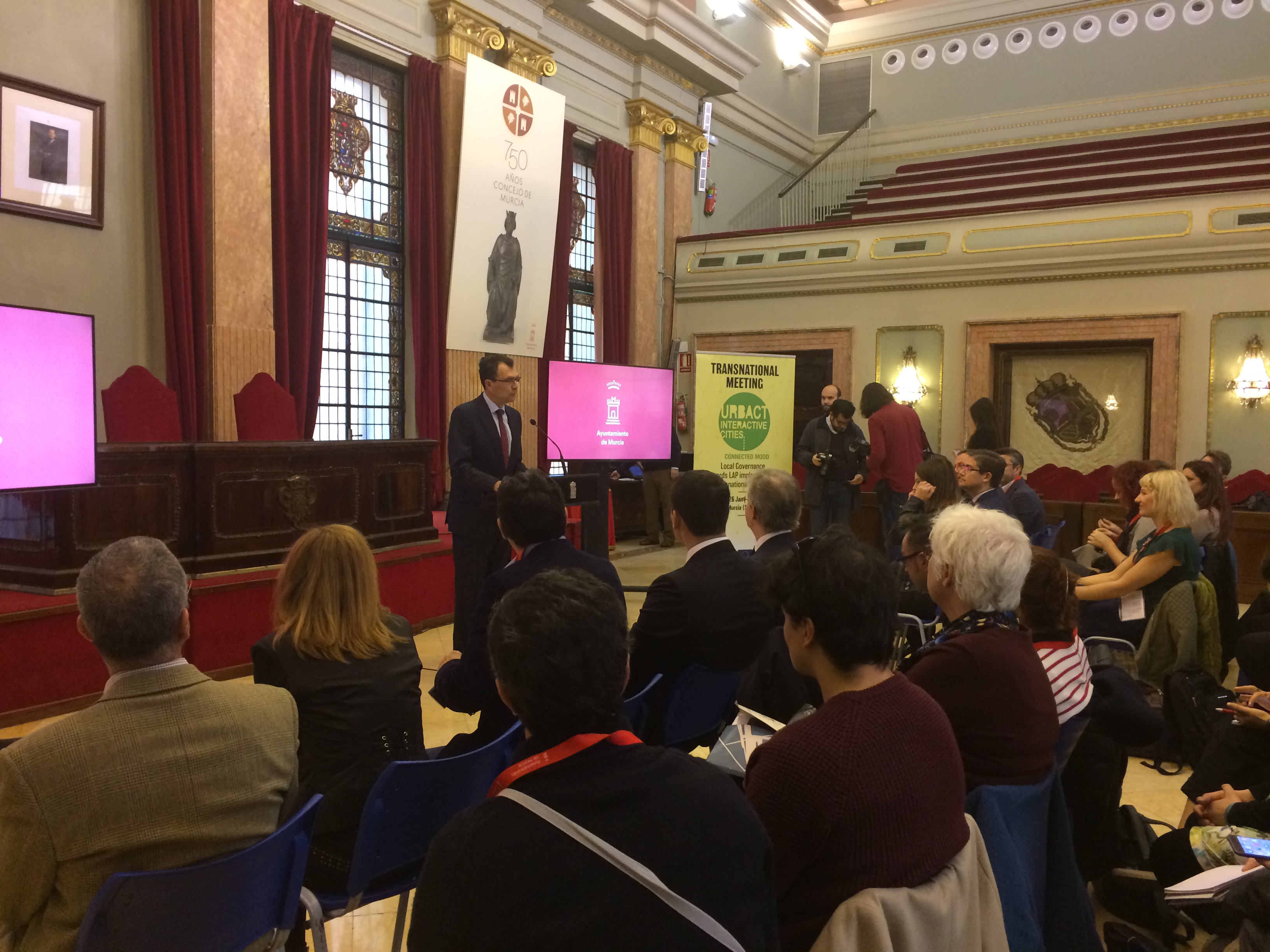 | 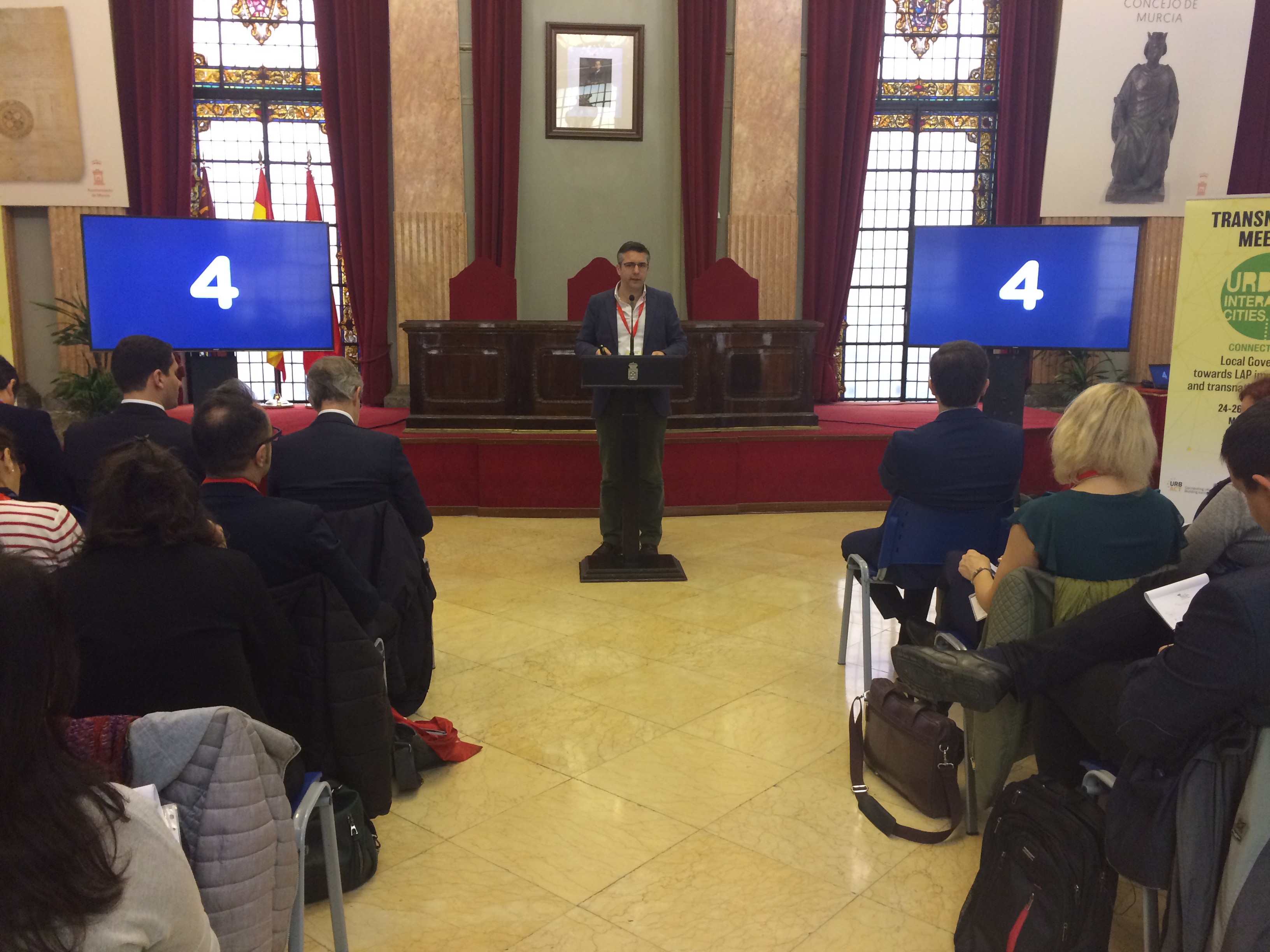 |
After the keynote speech we went to the first Field Visit: “Urban Revitalisation through Citizen Participation”, which started with an official inauguration and press-conference, by councilmembers Mr. Jesús Pacheco Méndez and Ms. Rebeca Pérez López, of the Santa Quitera art-exhibition, curated by Mr. Álvaro Peña.
The Santa Quitera mansion, former convent of San Antonio, has been turned into an open-air museum as part of the project. With the collaboration of 14 local artists (each one painting one work of art), using different techniques and styles and under the umbrella of the same theme: “2018 European Year of Cultural Heritage, Our heritage: where the past meets the future”, works of art were created, and afterwards transferred to vinyls, which in turn have been installed in the windows of the palace, and will be illuminated from behind during the evening and night. In this event, the second of what we hope to be many temporary exhibitions is displayed in the windows of the palace.
 |  |
This was followed by a tour through the Santa Eulalia neighbourhood (where the Urban DNA project took place), and with little stops at every intervention site, squares, facades, parks, green areas, trees, decoration, lighting, etc. and the explanations given by architects, municipal experts, the director of the intervention programme, etc. we tried to give as much insight as possible into the real change the neighbourhood underwent during the 10-day intensive and exhaustive intervention period, which in turn spiked unplanned art-interventions by neighbours and artists, as well as turning the area into a “hip” artist neighbourhood with pop-up shops, vegetarian and vegan restaurants, and much more.
Day one – afternoon
The afternoon started with the individual interventions by all partners, within the thematic working-groups, dividing all assistants in their respective areas of dedication 1) Tourist destinations, strengthening their image both locally and internationally, 2) Local business promotion, strengthening existing and potentially new local companies, 3) Urban development through shared decision making and citizen engagement.
Each delegation has the time and opportunity to address their Integrated Action Plan, the development, state, progress, difficulties throughout the process, etc. whist gaining feed-back by the other cities represented within the thematic work, as well as the present Urbact expert, who gave specific feed-back, suggestions, etc. on each IAP, and answered any questions or queries that result from the discussions on behalf of the cities.
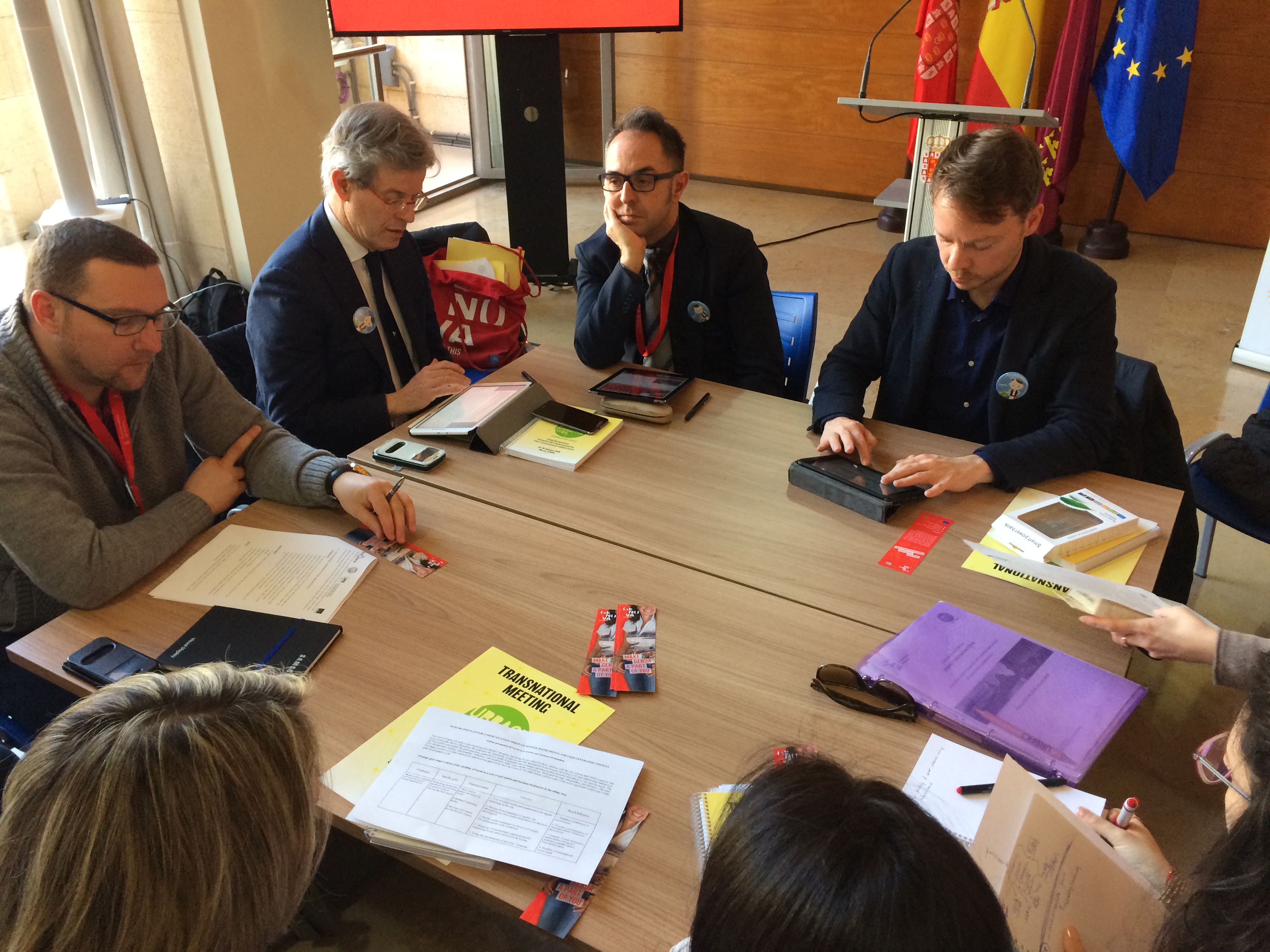 | 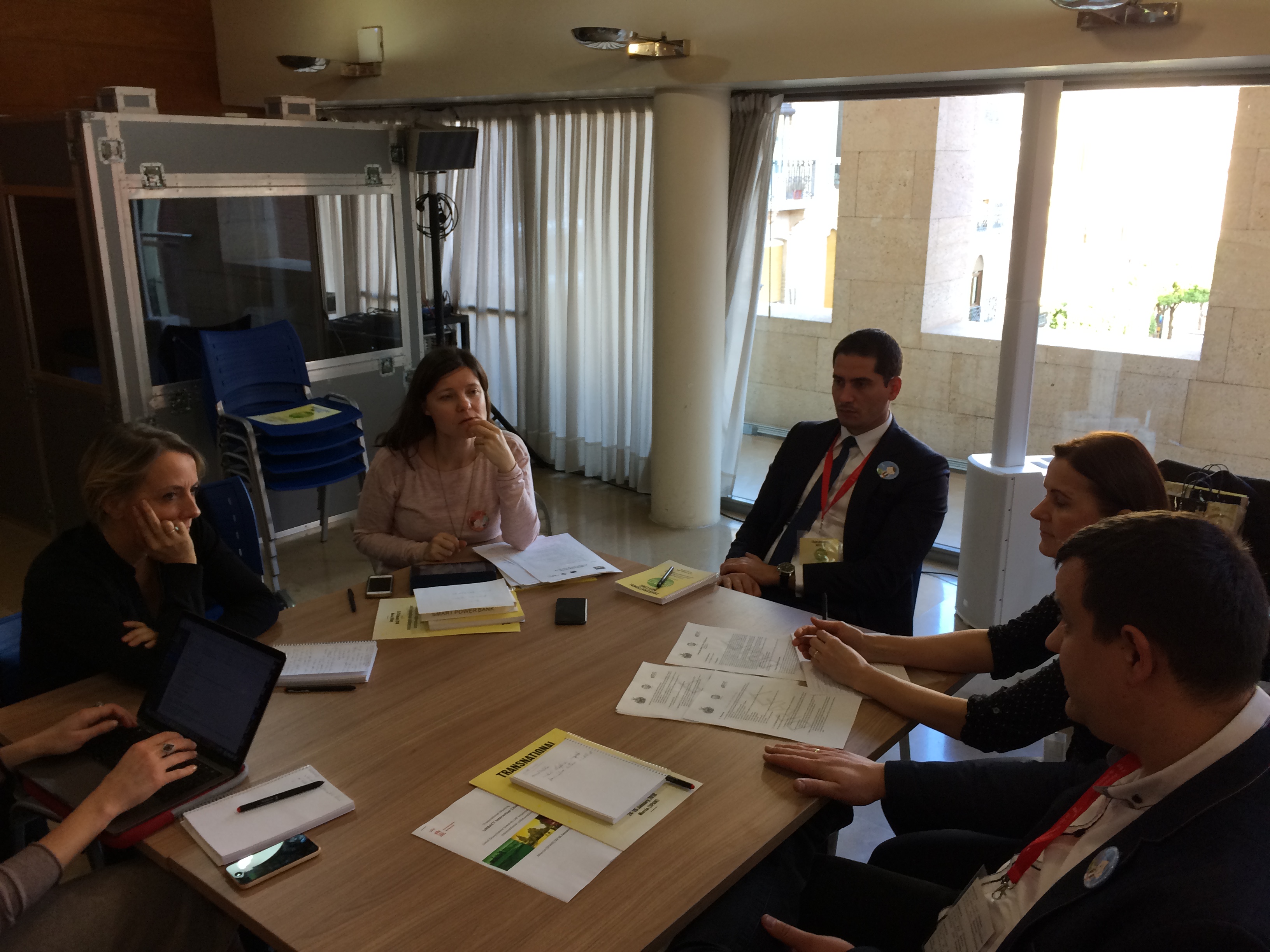 |
After the presentations and paired sessions, the cities had time to interact and discuss the IAPs further, as well as to start working on the changes and/or suggestions provided by the Urbact expert, to interchange experiences, expertise and know-how on the process and procedures, as well as discuss the work by the ULGs (Urban Local Groups), one of the pillars of the Urbact Programme that enables and ensures citizen participation, as well as input from different sectors and collectives.
Day two – morning
The second day of the Urbact Interactive Cities Transnational Meeting in Murcia started with two workshops, that, each in its own way, contributed to the daily work and tasks the member cities carry out, both the internal functioning and interaction as the externally directed communication and ULG engagement, the latter of which can is best described as a bridge, a contact point for both views, inner and outward.
We started off with a Workshop on Teambuilding and Optimizing Human Resources, “Building a high-performance work group” by Xoan González Soto, consultor and executive coach, where we addressed the Five Dysfunctions of a Team, outlining the root causes of politics and dysfunction on the teams where we work as individuals that are part of an organization and of a department, work-group or team, and the keys to overcoming them. Making a team functional and cohesive requires levels of courage and discipline.
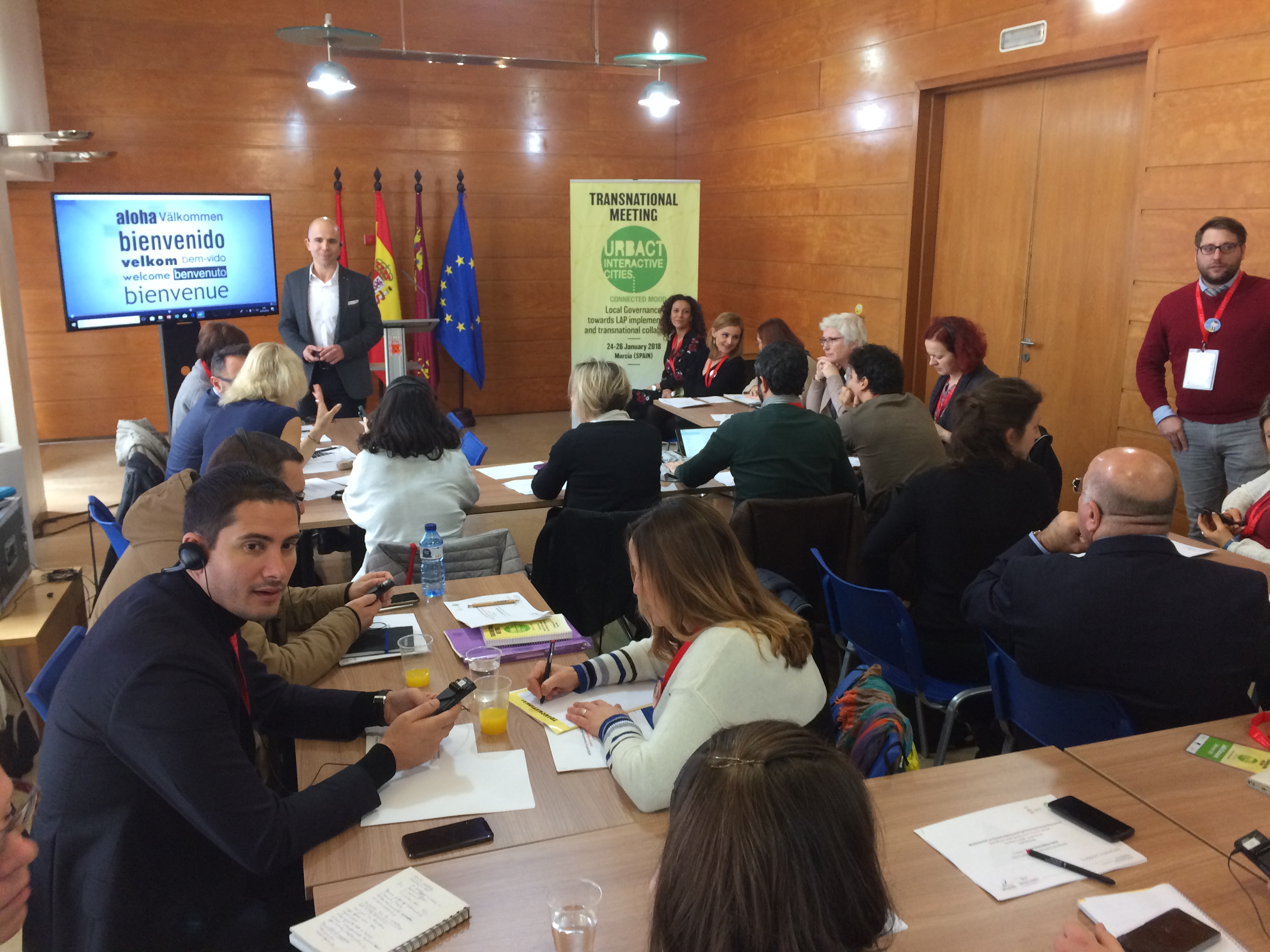 | 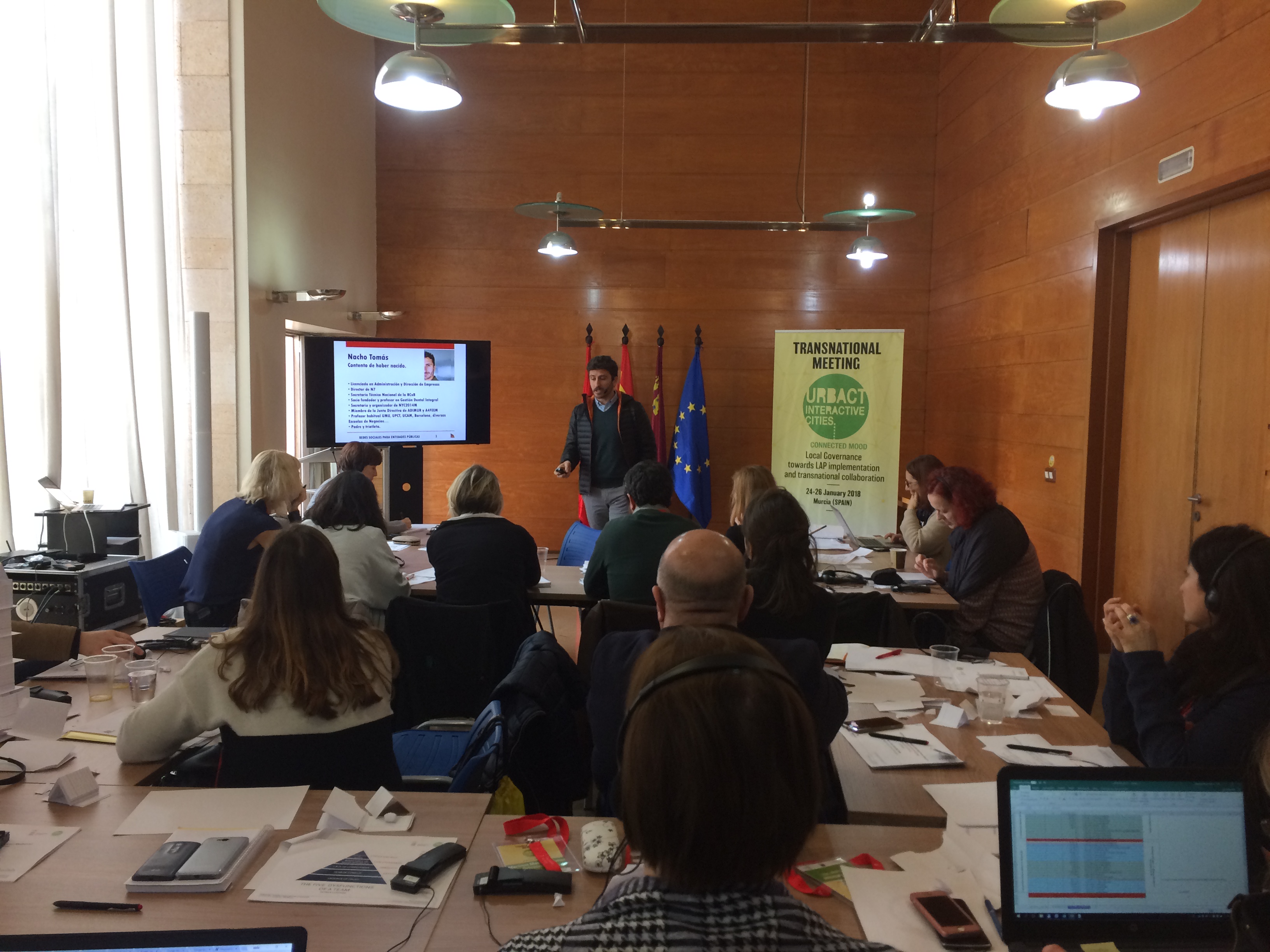 |
Followed by an introduction to the DISC behaviour assessment tool, which centres on four different behavioural traits: dominance, inducement, submission, and compliance. The DISC model provides a common language that people can use to better understand themselves and adapt their behaviours to and with others - within a work team, a sales relationship, a leadership position, or any other relationships.
DISC profiles help you and your team increase your self-knowledge, e.g. how you respond to conflict, what motivates you, what causes you stress and how you solve problems as well as improving working relationships by recognizing the communication needs of team members, facilitating better teamwork and teach productive conflict. It also provides tools to manage more effectively by understanding the dispositions and priorities of employees and team members, and for one-self it helps leaders become more self-knowledgeable, well-rounded and effective.
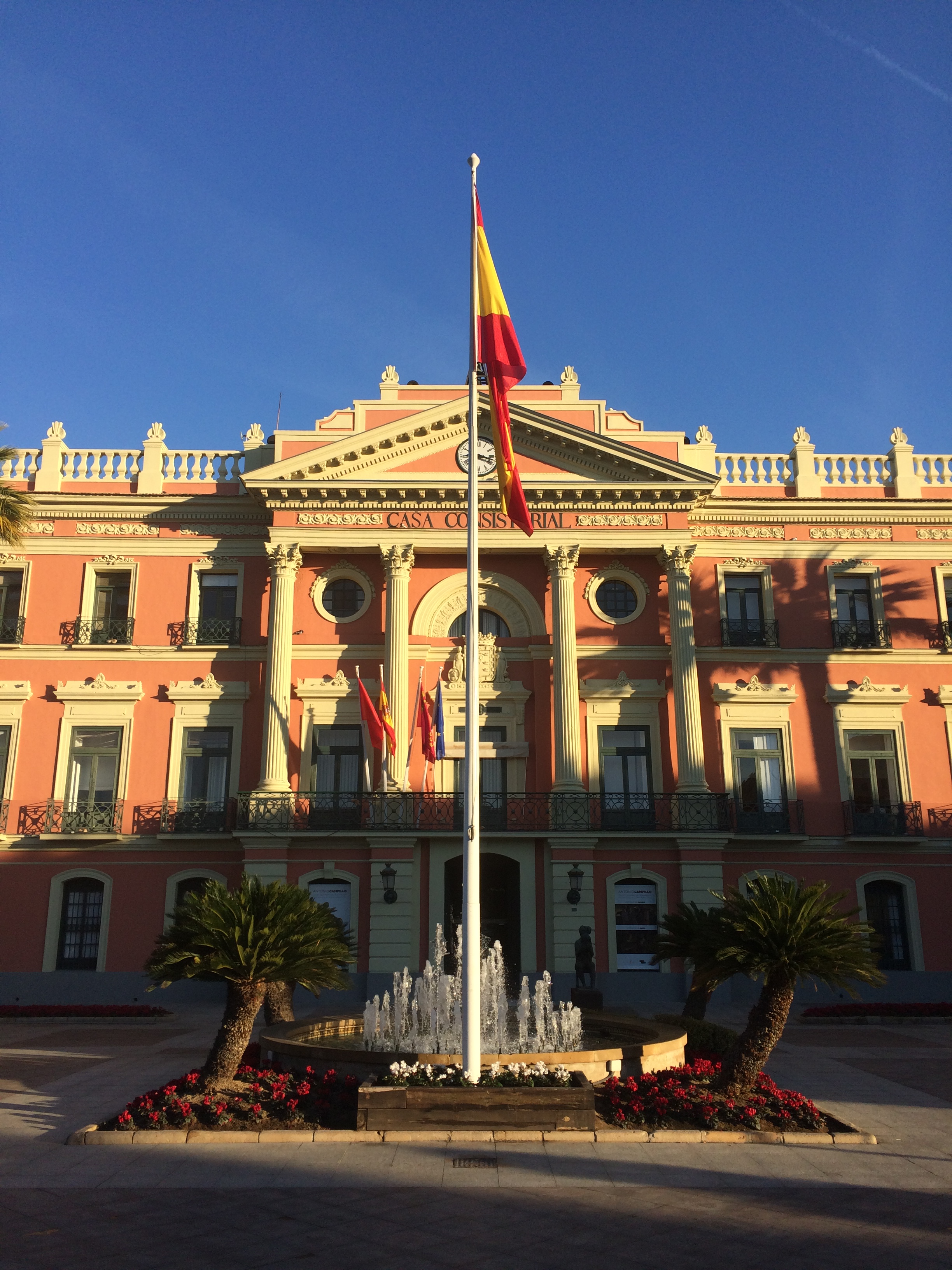 | 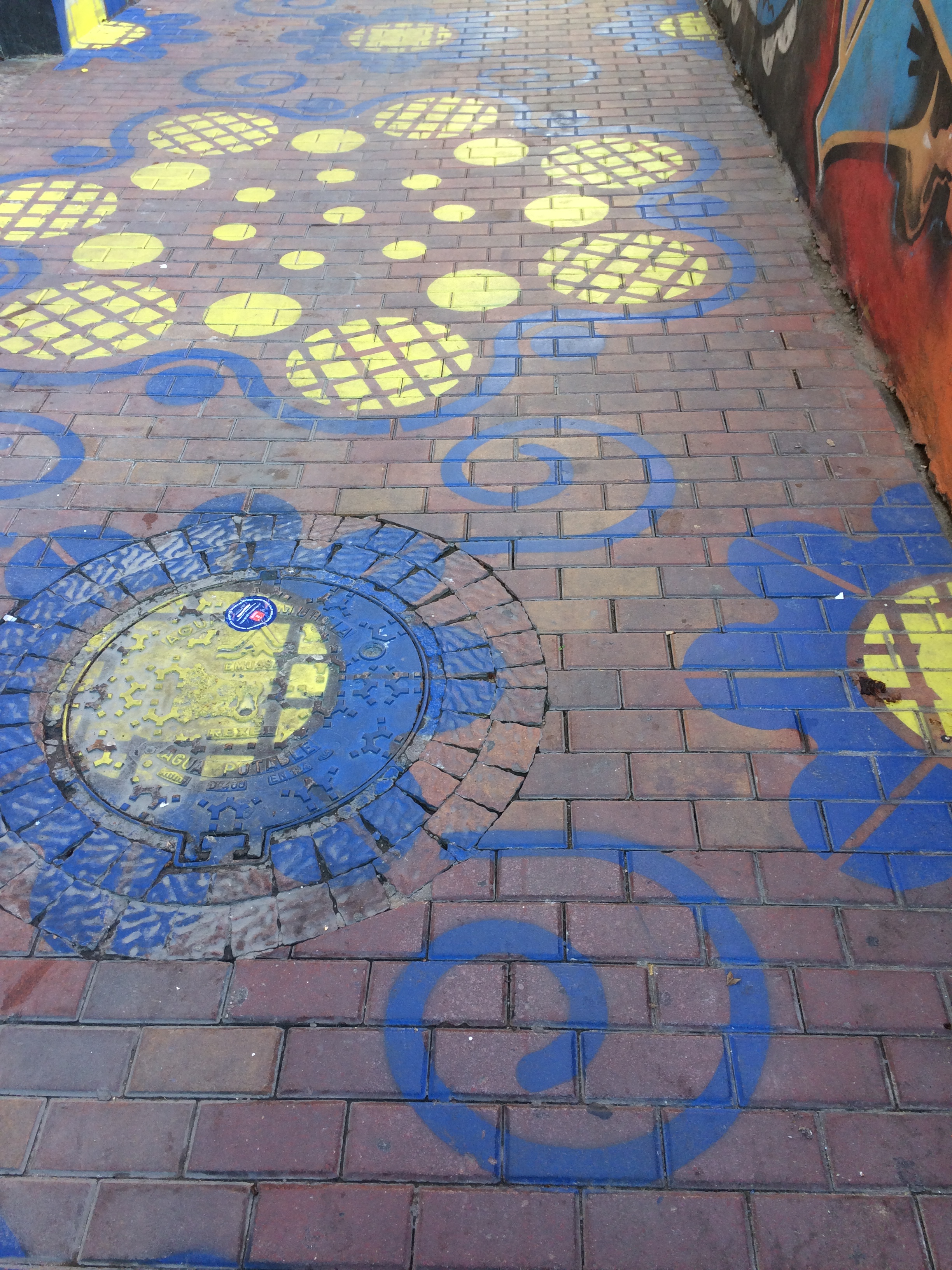 |
Combined with a number of exercises aimed at broadening the scope and vision of group dynamics, problem solving and compliance with top-down instructions, the participants were asked to perform seemingly “easily” performed tasks as groups (competitive element), which in an amusing and casual way illustrated the internal dynamics, and the personal profiles of the group-members.
Kasper van Hout
Urbact Interactive Cities Murcia
Submitted by fvirgilio on
